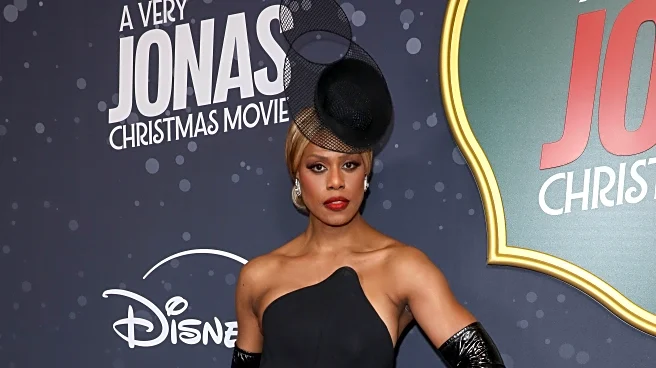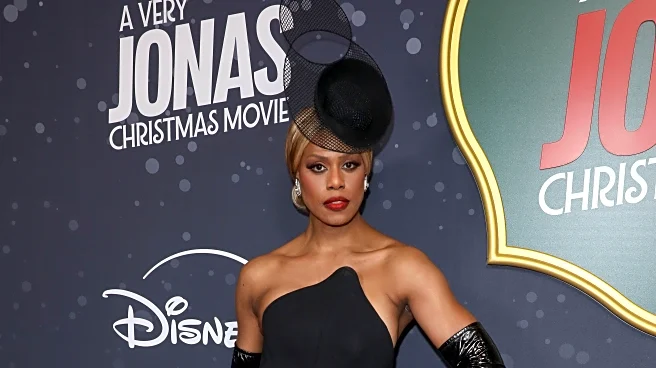What's Happening?
Disney's stock experienced a significant drop, falling as much as 9% following the release of its mixed fourth-quarter results. The company reported revenue of $22.46 billion, which fell short of analyst
expectations of $22.83 billion. This revenue miss was largely attributed to a 6% decline in the entertainment division, encompassing streaming, TV, and theatrical businesses. The linear network revenue saw a 16% year-over-year decrease, with operating income dropping by 21% due to accelerated cord-cutting and a shift in advertising dollars towards streaming platforms. CEO Bob Iger is in the final stages of his turnaround plan before his planned departure next year. Despite the revenue shortfall, Disney's adjusted earnings per share (EPS) of $1.11 exceeded the $1.07 forecasted by analysts, although it marked a 3% decline from the previous year.
Why It's Important?
The decline in Disney's linear TV revenue highlights the ongoing challenges faced by traditional media companies as consumer preferences shift towards streaming services. This trend is significant for the entertainment industry, as it underscores the need for companies to adapt their business models to remain competitive. Disney's ability to exceed EPS expectations despite revenue challenges suggests resilience in its financial strategy, particularly in its streaming and parks divisions. The company's focus on streaming profitability and subscriber growth, with Disney+ adding 3.8 million subscribers, indicates a strategic pivot towards digital content delivery. This shift is crucial for Disney's long-term growth and sustainability in an evolving media landscape.
What's Next?
Disney anticipates double-digit adjusted EPS growth for fiscal 2026, signaling confidence in its strategic initiatives. The company plans to double its share repurchase target to $7 billion next year, reflecting a commitment to returning value to shareholders. Additionally, Disney announced a $0.50 increase in its cash dividend to $1.50. The company is also targeting approximately $375 million in streaming profits for Q1 2026, with plans to merge Disney+ and Hulu next year. These steps indicate a continued focus on strengthening its streaming services and optimizing its content delivery platforms.
Beyond the Headlines
The shift from traditional TV to streaming services raises broader questions about the future of media consumption and advertising strategies. As companies like Disney navigate these changes, there are potential implications for content creation, distribution, and consumer engagement. The decline in political ad spending and weaker theatrical comparisons further illustrate the complexities of adapting to new market dynamics. Disney's strategic decisions in response to these challenges could influence industry standards and consumer expectations in the years to come.












